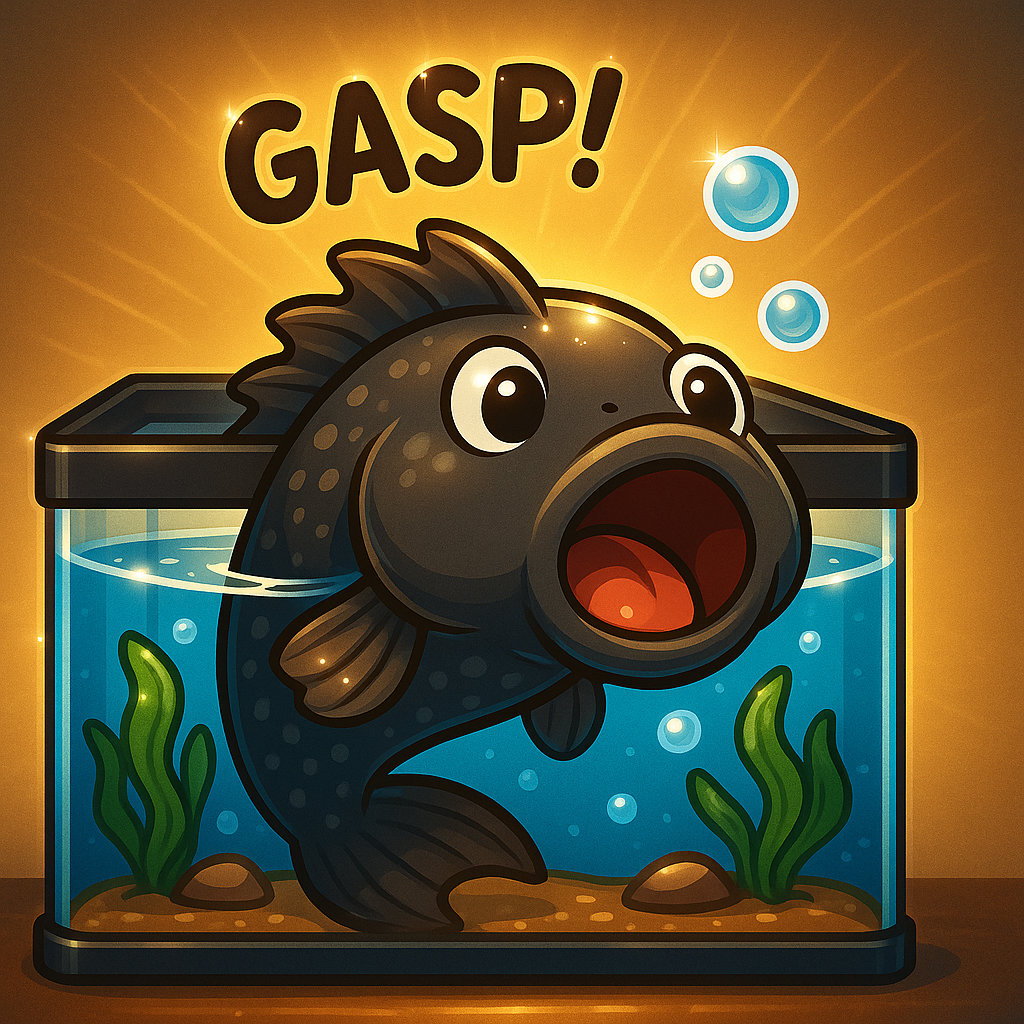Can Plecos Breathe Out of Water?
🧪 Can Plecos Breathe Out of Water?
🐟 Respiration in Loricariidae (Plecos)
- Plecos (family Loricariidae) are primarily branchial respirators (they breathe with gills under normal conditions).
- Many species are also facultative air breathers, meaning they can switch between water breathing and air breathing depending on environmental conditions.
🔬 Physiological Adaptation
- Instead of lungs, plecos use a vascularized stomach or intestine as an auxiliary respiratory organ.
- When oxygen levels in the water fall (hypoxic environments), plecos:
- Swim to the surface.
- Gulp air into their digestive tract.
- Oxygen diffuses across the thin epithelium of the stomach or intestine into the bloodstream.
- CO₂ is expelled the same way during exhalation.
🌍 Ecological Context
- Many plecos come from South American river systems that undergo seasonal droughts, during which water becomes stagnant and oxygen-depleted.
- Air breathing allows them to:
- Survive in warm, low-oxygen waters.
- Withstand temporary stranding in shallow pools.
- Migrate short distances over damp ground to new water sources (observed in Hypostomus plecostomus).
🕒 Survival Out of Water
- Depending on species, size, and humidity, plecos can survive several hours to over a day if kept moist.
- Larger-bodied plecos with higher oxygen demands dry out faster.
- Smaller species like Ancistrus can last shorter periods but still show air-gulping behavior in aquaria.
⚠️ Limitations & Risks
- Air breathing is a supplemental strategy — plecos are not amphibians.
- Prolonged emersion (being out of water) leads to:
- 🩸 Dehydration (loss of protective mucous coat).
- 🌡️ Thermal stress (air heats/cools faster than water).
- 🦠 Pathogen risk (dried skin and gills are infection-prone).
📚 Scientific Studies & Evidence
- Hypostomus regani and Hypostomus plecostomus are well-studied facultative air breathers.
- Research shows significant intestinal vascularization, confirming gut air-breathing capacity.
- Oxygen uptake efficiency from the gut can reach 20–30% of total O₂ demand during hypoxic stress.
🐟 Conclusion
- ✅ Plecos can breathe air by using a modified, vascularized digestive system.
- ⏳ They can survive outside water for limited periods, especially in humid environments.
- ⚠️ However, air breathing is an emergency adaptation, not a permanent lifestyle.

Impulsada por Lightspeed
Mostrar precios en:USD